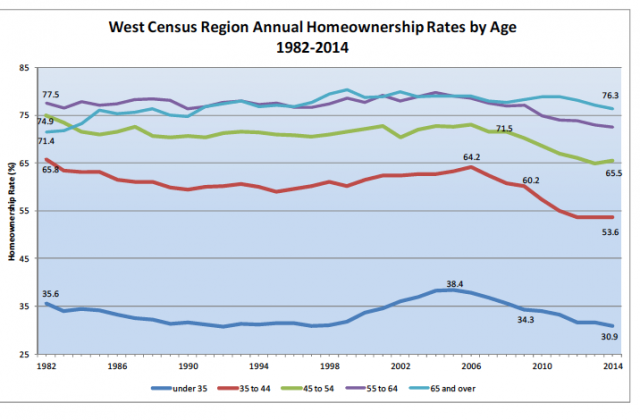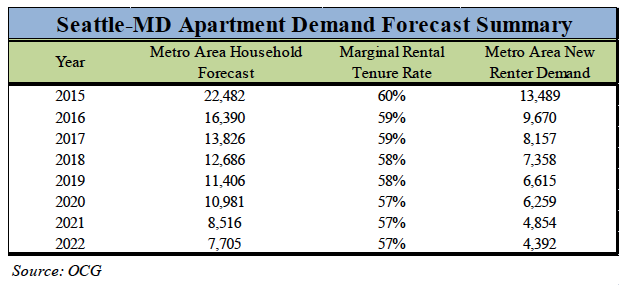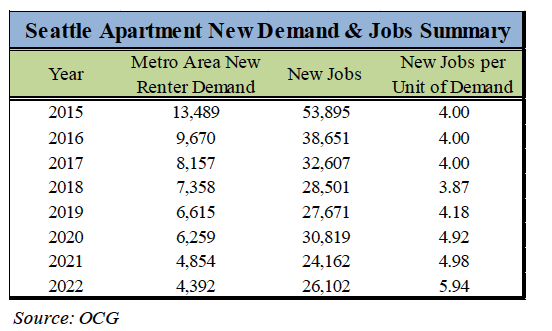Reality Check: High Demand for Apartments is the New Normal
It’s just as easy to get lost in the details and data as it is to get caught up in anecdotal information about housing. Too much data can take away from our compassion about people who are suffering and struggling even if it is a small number, and too many stories about outliers can distort the way we make policy. This week I’m going to revisit a 2015 market study by the O’Connor Group (OCG) that captures some baseline data that is pretty compelling about the longer term.
In Seattle, and all over the country, people are not buying single-family homes in the numbers we’ve seen in previous decades. And younger households are staying rental units longer. That means demand for rental units will remain high. The implication here is that we simply must back off the regulatory regime we’re currently under and continually expanding. If we don’t, we’re not going to see less demand, but simply higher prices.
Marginal Tenure Rates
One of the factors that determine demand is the marginal tenure rate. Basically, the marginal tenure rate determines what percentage of the new households will be rented units. Recently, and as detailed on the previous page, homeownership rates have been decreasing, leading more people to rent, rather than buy. As such, we predict 60% of all new households in the Seattle-MD will be renters. As the single family housing market makes modest gains in the market, marginal tenure rate will decrease, dropping to only 59% of new households in 2016 and 2017, 58% over the next two years (2018-2019) and down to 57% through to 2022. Despite the gradual decrease in marginal tenure rate, the majority of new households will continue to rent through the forecast period, keeping apartment demand high.
The forecast through 2022 is detailed in the table below.




